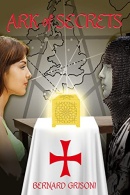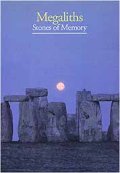<< Text Pages >> Abu Erteila - Ancient Temple in Sudan
Submitted by bat400 on Friday, 21 February 2014 Page Views: 3232
Multi-periodSite Name: Abu ErteilaCountry: Sudan
NOTE: This site is 243.493 km away from the location you searched for.
Type: Ancient Temple
Nearest Town: Khartoum Nearest Village: Kabushiya
Latitude: 16.860000N Longitude: 33.750000E
Condition:
| 5 | Perfect |
| 4 | Almost Perfect |
| 3 | Reasonable but with some damage |
| 2 | Ruined but still recognisable as an ancient site |
| 1 | Pretty much destroyed, possibly visible as crop marks |
| 0 | No data. |
| -1 | Completely destroyed |
| 5 | Superb |
| 4 | Good |
| 3 | Ordinary |
| 2 | Not Good |
| 1 | Awful |
| 0 | No data. |
| 5 | Can be driven to, probably with disabled access |
| 4 | Short walk on a footpath |
| 3 | Requiring a bit more of a walk |
| 2 | A long walk |
| 1 | In the middle of nowhere, a nightmare to find |
| 0 | No data. |
| 5 | co-ordinates taken by GPS or official recorded co-ordinates |
| 4 | co-ordinates scaled from a detailed map |
| 3 | co-ordinates scaled from a bad map |
| 2 | co-ordinates of the nearest village |
| 1 | co-ordinates of the nearest town |
| 0 | no data |
Internal Links:
External Links:
Ancient Temple in Republic of the Sudan.
All that remains of this Meroitic Period (fourth century BC) temple complex are are six foot high koms (mounds.) Long buried in the sediments of the Wadi el-Hawad, ground-penetrating radar revealed the walls of a small temple.
Finds have included decorative architechural fragments, painted ceramics, and livestock bones in a large kitchen.
Licensed by the Sudanese National Corporation of Antiquities and Museums, an international team has been excavating the mounds. In addition to the finds from the Meroitic, there are also intrusive Christain 4th C CE burials among many of the mounds.
Note: Team of Archaeologists Discover Lost 4th C BCE Temple in Sudan
You may be viewing yesterday's version of this page. To see the most up to date information please register for a free account.
Do not use the above information on other web sites or publications without permission of the contributor.
Click here to see more info for this site
Nearby sites
Click here to view sites on an interactive map of the areaKey: Red: member's photo, Blue: 3rd party photo, Yellow: other image, Green: no photo - please go there and take one, Grey: site destroyed
Download sites to:
KML (Google Earth)
GPX (GPS waypoints)
CSV (Garmin/Navman)
CSV (Excel)
To unlock full downloads you need to sign up as a Contributory Member. Otherwise downloads are limited to 50 sites.
Turn off the page maps and other distractions
Nearby sites listing. In the following links * = Image available
8.7km N 359° Meroë Pyramids* Pyramid / Mastaba
9.5km NNW 334° Meroë* Ancient Village or Settlement
38.5km WSW 241° El Kadada Neolithic Tomb Burial Chamber or Dolmen
143.7km N 10° Statue of Taharqa Carving
192.4km SW 224° Sudan National Museum Museum
271.2km NW 309° Zuma Tumuli Round Barrow(s)
271.4km NW 315° Nuri Pyramids* Pyramid / Mastaba
271.5km NW 309° El-Kurru Tumuli Round Barrow(s)
271.7km NW 309° El-Kurru Pyramids* Pyramid / Mastaba
272.8km NW 312° Sanam Temple Ancient Temple
275.8km NW 313° Gebel Barkal Temple of Amon* Ancient Temple
276.0km NW 313° Gebel Barkal Mountain and Rock Formation* Natural Stone / Erratic / Other Natural Feature
276.5km NW 312° Gebel Barkal Temple of Mut Ancient Temple
276.5km NW 312° Gebel Barkal Temple B700 Ancient Temple
276.6km NW 313° Karima Pyramids* Pyramid / Mastaba
277.2km WNW 292° Wadi Abu Dom Rock Art Rock Art
495.0km NW 317° Sesebi* Ancient Village or Settlement
536.1km NW 318° Soleb* Ancient Temple
548.8km NW 319° Sedeinga* Pyramid / Mastaba
612.8km ESE 119° Aksum* Ancient Village or Settlement
617.9km NNW 336° Buhen Stone Fort or Dun
632.7km ESE 116° Yeha* Ancient Village or Settlement
639.7km SE 143° Gorgora Rock Shelter* Cave or Rock Shelter
648.4km NNW 340° Abu Simbel Temple of Ramses II* Ancient Temple
648.4km NNW 340° Abu Simbel Temple of Nefertari* Ancient Temple
View more nearby sites and additional images






 We would like to know more about this location. Please feel free to add a brief description and any relevant information in your own language.
We would like to know more about this location. Please feel free to add a brief description and any relevant information in your own language. Wir möchten mehr über diese Stätte erfahren. Bitte zögern Sie nicht, eine kurze Beschreibung und relevante Informationen in Deutsch hinzuzufügen.
Wir möchten mehr über diese Stätte erfahren. Bitte zögern Sie nicht, eine kurze Beschreibung und relevante Informationen in Deutsch hinzuzufügen. Nous aimerions en savoir encore un peu sur les lieux. S'il vous plaît n'hesitez pas à ajouter une courte description et tous les renseignements pertinents dans votre propre langue.
Nous aimerions en savoir encore un peu sur les lieux. S'il vous plaît n'hesitez pas à ajouter une courte description et tous les renseignements pertinents dans votre propre langue. Quisieramos informarnos un poco más de las lugares. No dude en añadir una breve descripción y otros datos relevantes en su propio idioma.
Quisieramos informarnos un poco más de las lugares. No dude en añadir una breve descripción y otros datos relevantes en su propio idioma.